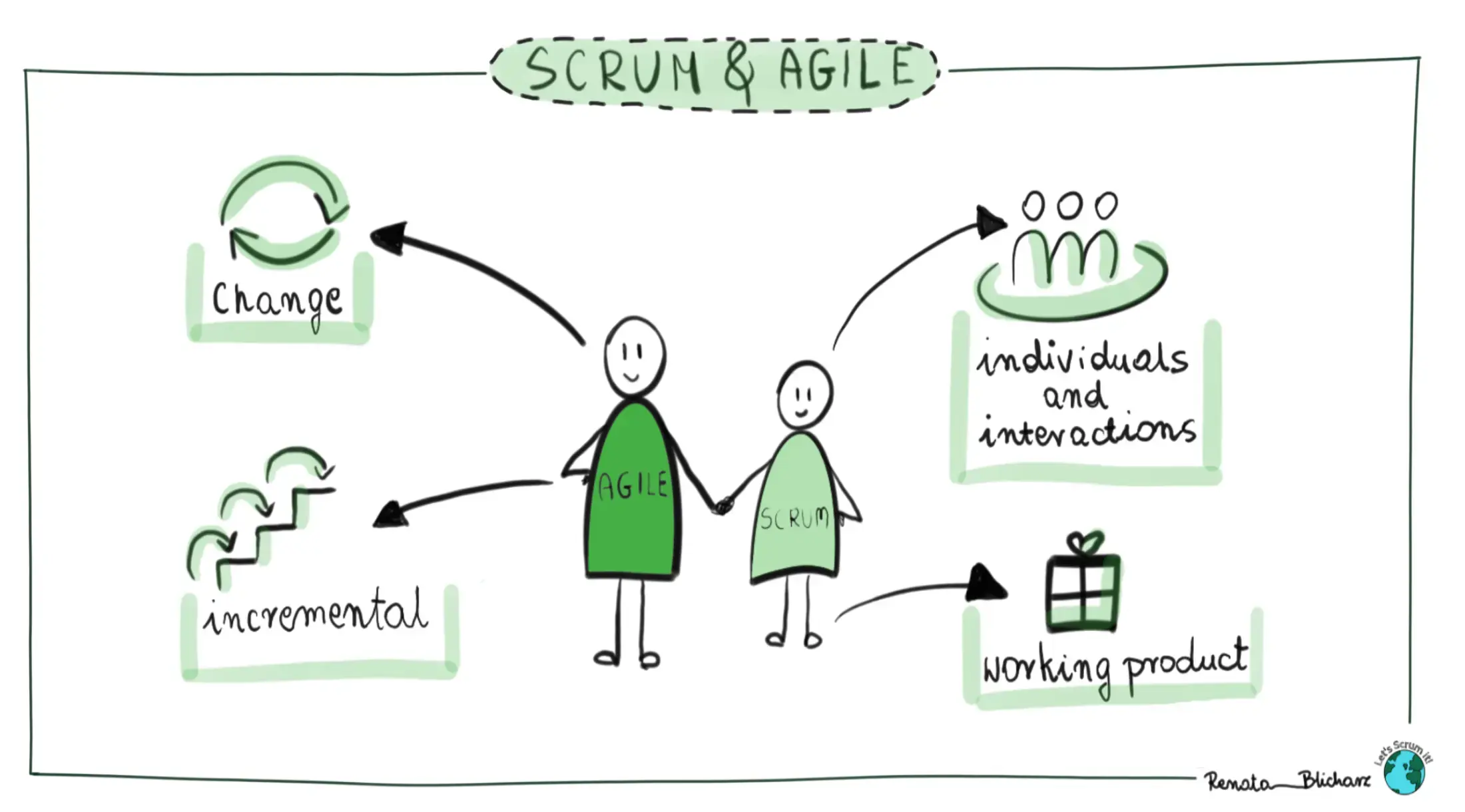
The Relationship between Scrum and Agile
April 26, 2020 • 4 min to read
Term “Agile” became much more popular in the last few years. Find out what it is and how it is related to Scrum.
Table of Contents
Introduction
*This post has been updated based on the Scrum Guide 2020
Knowledge about Scrum without understanding Agile is like learning how to dance without the music. You can do it, of course, but it doesn’t seem right for a longer period of time.
That’s exactly what was discovered by the authors of Agile Manifesto in 2001. They already had a lot of great ideas on how to improve software development like: Scrum, Adaptive Software Development, Crystal, Extreme Programming etc., but they knew that there was something important missing in all of these.
During discussion in the Wasatch mountains of Utah, they wrote Agile Manifesto summarizing Agile values and principles.
What exactly is Agile?
Agile described by Jim Highsmith is:
about delivering good products to customers by operating in an environment that does more than talk about "people as our most important asset" but actually "acts" as if people were the most important, and loses the word "asset".
Agile is a mindset and philosophy that is following values and principles described in Agile Manifesto.
Key characteristics: people-driven, promote collaboration, process adaptability. It is focused on the human aspects of the work that are frequently underestimated.
![]()
Source: https://www.agilesherpas.com/agile-mindset-marketing-agility
Scrum in Agile
Ok, great, we know some basics of Agile, but how can we connect it with Scrum? We already know that Agile is a way of thinking and it can be used by implementation of different practices. Scrum is one of them.
Following the Scrum Guide:
Scrum (n): A framework within which people can address complex adaptive problems, while productively and creatively delivering products of the highest possible value.
It is a set of values and rules that can be used in order to deliver a product. In that case, Scrum is a great way to adopt the Agile mindset.
What Scrum and Agile have in common?
- They are both representing shift from work focused on directing, control and processes to individuals and interactions between them.
- Working software (working product) is more important than comprehensive documentation. It doesn’t mean that documentation is not important, but it exists only if it has value to the product. That’s why in Scrum all requirements related to the product are in the simplified version of the Product Backlog.
- Collaboration with the customer is important. Customers are not treated as “money makers” but we treat them with respect and listen to their needs and feedback. In order to create high quality products, business people and developers need to work together.
- Change - it appears everywhere, all the time and that’s what Agile and Scrum are aware of. That’s why in Scrum we need to inspect work during the Sprint and adapt accordingly in order to respond to changes. It is an important difference from previous approaches that were fully focused on the plan without adjusting it when changes appeared.
- Iterative and incremental approach - instead of delivering product all at once, after a long time of developing, Agile and Scrum promotes dividing it into smaller pieces but doing it frequently. That’s how it will have value for the customer and it is also a great opportunity for inspection and adaptation to the market.
![]()
Not a silver bullet
I must highlight that none of these (Agile or Scrum) are silver bullets and will not magically solve problems for us. But I would strongly recommend practising being Agile together with using the Scrum framework. It will increase the chance of delivering high value.
Are you still struggling with understanding how exactly you can use the Agile mindset in the Scrum framework? Register for consultation with me. I will be more than happy to help you.
Would you like to read more about education?
Sign up for the Newsletter & join Let's Scrum it community!